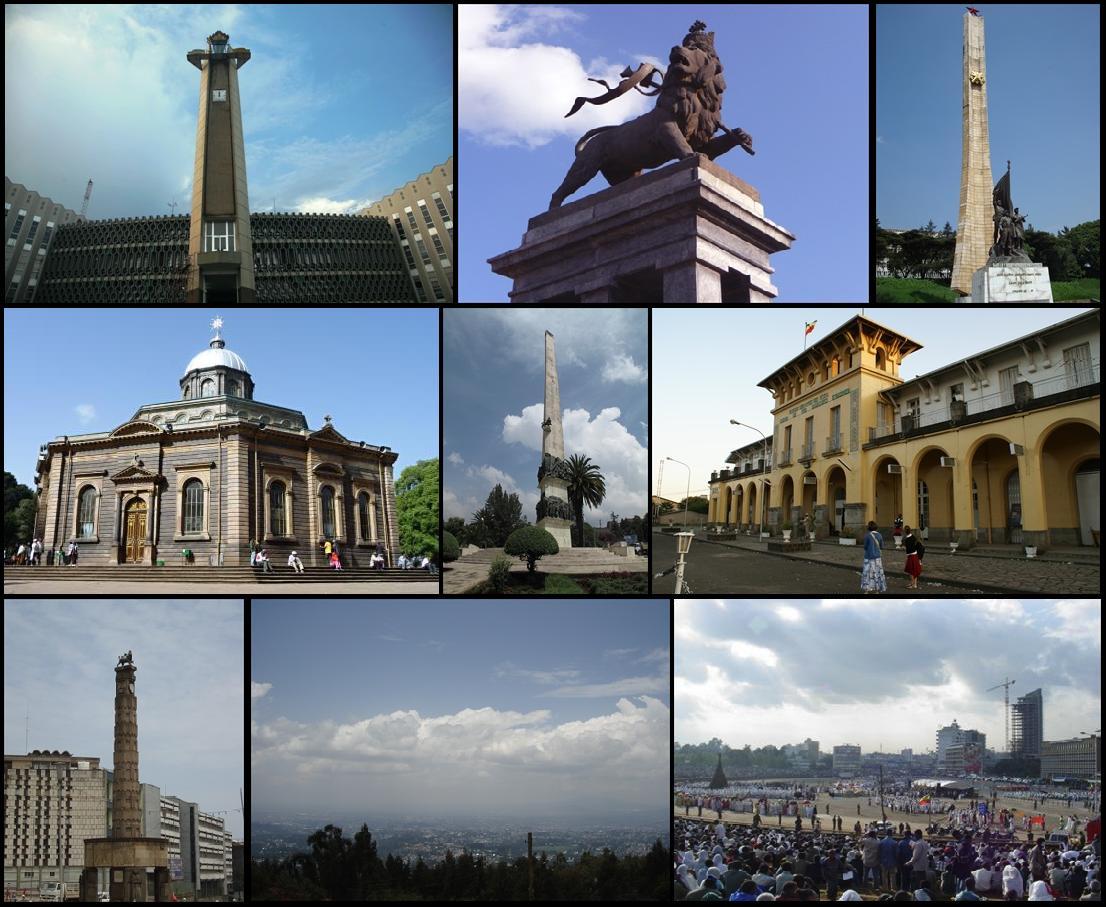Buzz Ethiopia
Addis Ababa is dubbed one of the emerging global cities in the world.
As young as it is, it certainly is a city with a lot of charm and interesting historical facts, it is the place where the Organization of the African Union was created 50 years ago. All this buzz about our city has made me want to share some interesting historical facts, which I’ve collected from various sources.
1. The first bank established was the “Bank of Abyssinia” in 1905
2. Dagmawi Menelik Hospital was in 1909 the first hospital built in Addis Ababa. It was built to accommodate 200 patients
3. Ethiopian Telecommunications Corporation was established on March 9, 1894, it included telegraph and postal services. It is the oldest public telecommunications operator in Africa
4. The first telegraph line was constructed between Addis Ababa and Harar in 1899
5. The first law requiring Addis Ababans to pay taxes to the municipality was enacted in 1942
6. In 1902 tap water was first installed in the Palace, it cost 7000 birr
7. TO.MO.CA. Coffee Shop was the first coffee company, it was established in 1953. The name stands for Torrefazzione Moderna Café, which means Modern Coffee Roasting
8. The first locomotive was brought to Addis Ababa in 1904 and it was used to transport construction material into the city to build houses and other structures
9. The first public toilets were built in 1975, there were 30 of them
10. The first Boeing jets landed in the city on December 3, 1962
11. The first Ethiopian stamps were printed and sold in 1908. They were printed in France
12. In 1905, the first school modeled after western education was opened with teachers who came from Alexandria, Egypt
13. Mercato, formerly known as mercato indigino is the largest outdoor market in Africa, it started off as a segregated Ethiopians only market during the 5-year Italian occupation, hence the term indigino for indigenous
14. The National Palace, located near the United Nations Economic Commission for Africa, was built to celebrate Emperor Haileselassie I’s silver Jubilee in 1955, hence its former name Jubilee Palace. It was modeled after the Buckingham palace in the United Kingdom
15. The old post office by Piassa used to be the home of Mohammed Ali, a very well known Indian merchant from Gujurat who introduced corrugated iron sheets and abujedi and much more to the city
16. There’s a Karl Marx monument located inside Debab Restaurant across the street from Addis Ababa University main campus. It’s a reminisce of the country’s communist past
17. Alembekagn, also known as cerchele, is the first western style prison built in the city in 1923. It was designed in an octagonal architecture to better monitor prisoners. It was demolished to make way for the new African Union Headquarters
18. Driving regulations required that cars drive on the left side of the road until it was changed in 1964 to right handed traffic
19. Itege Taitu proclaimed a law requiring every citizen to send their 7 to 21 year old children to school or get fined 50 birr
20. May 5th is the day that marked the beginning and the end of the Italian occupation of Ethiopia. On May 5th of 1936 the Italian army marched into Addis Ababa, and on May 5th 1941 Emperor Haileselassie and his army and allies marched into Addis Ababa ending the 5-year occupation
21. The present day Piassa used to be a segregated market place reserved for Italians during the 5-year occupation of Ethiopia
22. Mexico Square was built to recognize Mexico’s support for Ethiopia as it was the only nation in the League of Nations to have condemned Italy’s occupation. In return, Mexico named a metro station stop after Ethiopia
23. Addis Ababa University was first founded as the University College of Addis Ababa in 1950, it was then renamed Haileselassie I University in 1962, and in 1975 it was renamed Addis Ababa University
24. The first Ethiopian coins with Emperor Menelik II’s face and name were mined in 1897
25. The first time electric power and lights were introduced in 1923, it was mainly used in government offices, the Palace and certain houses
The Reporter
